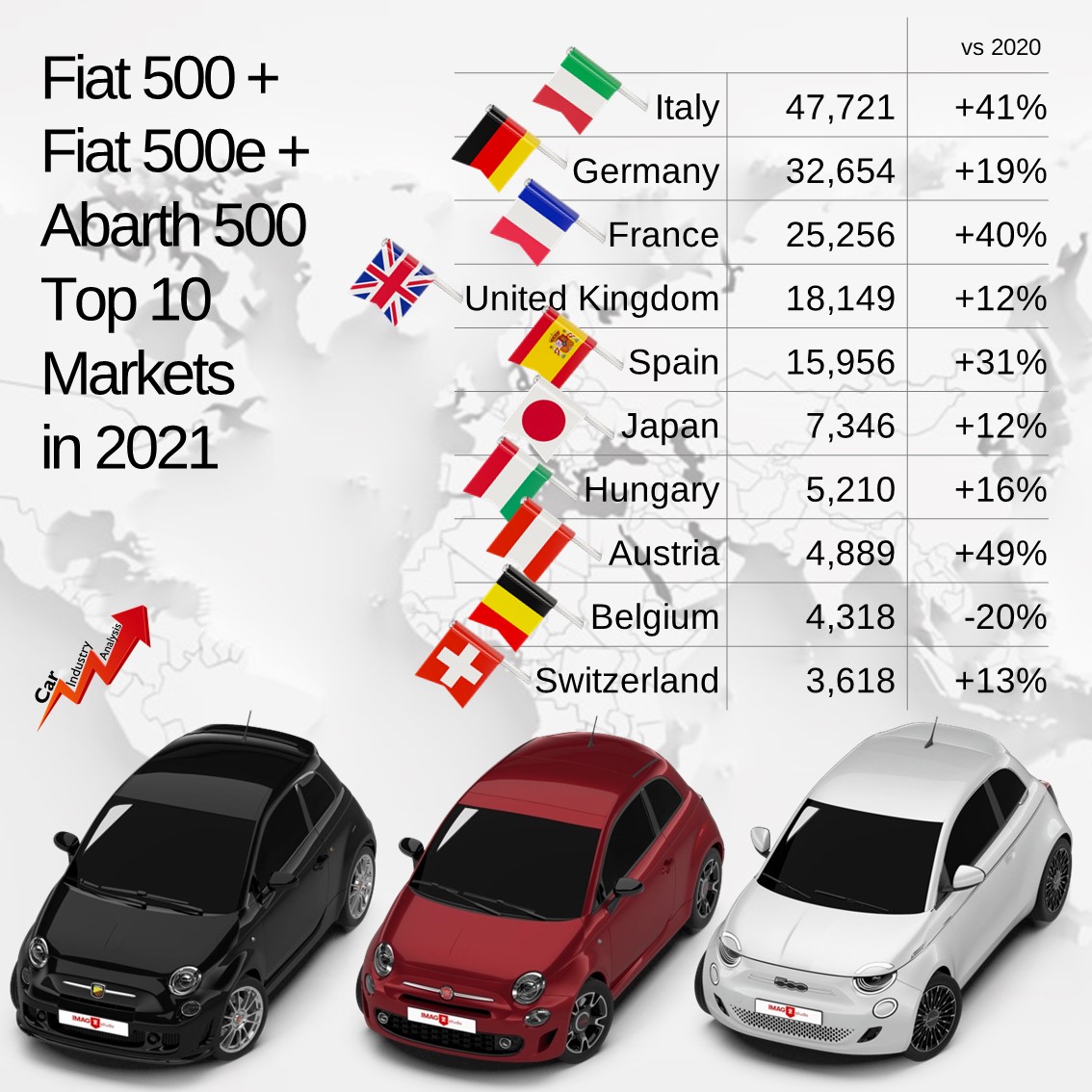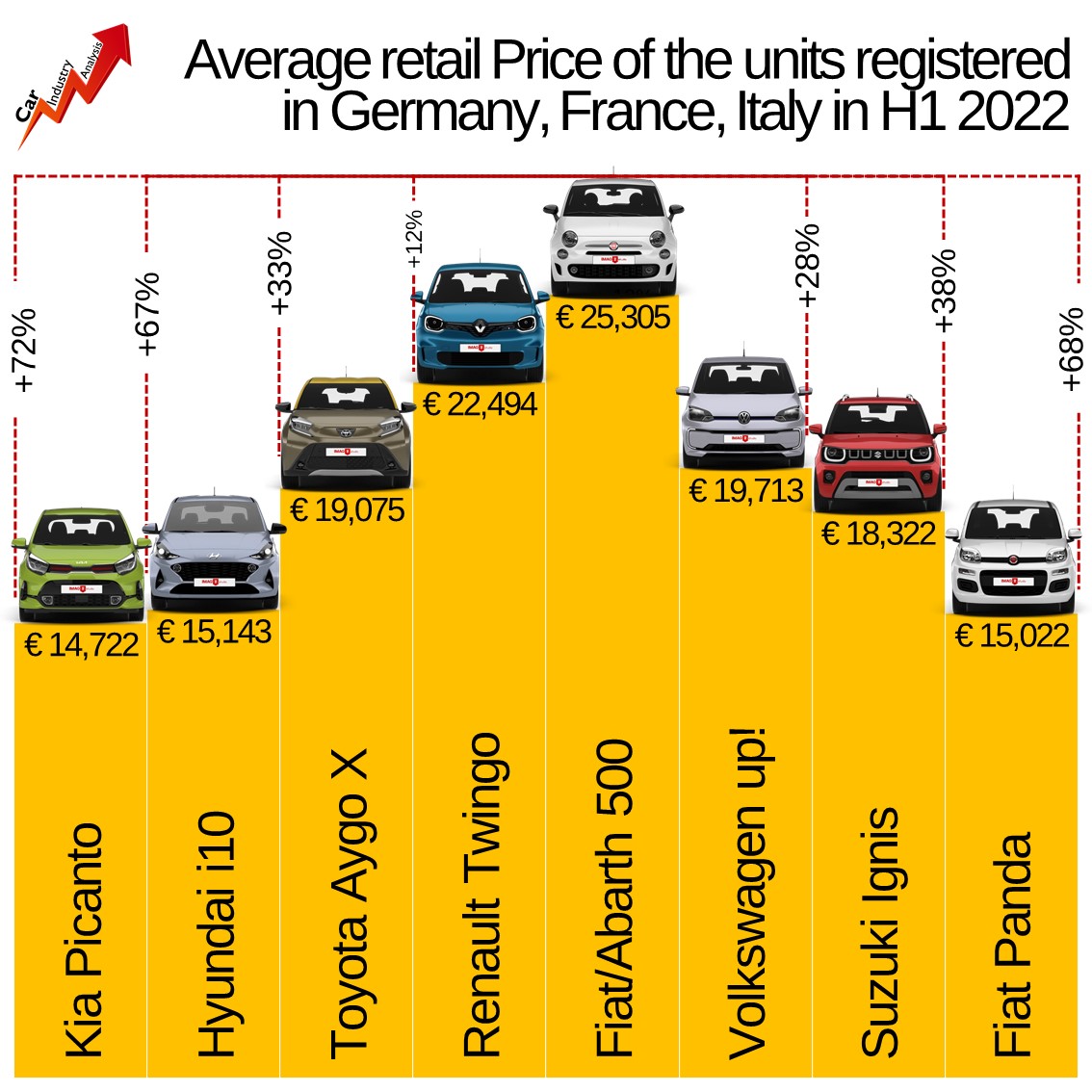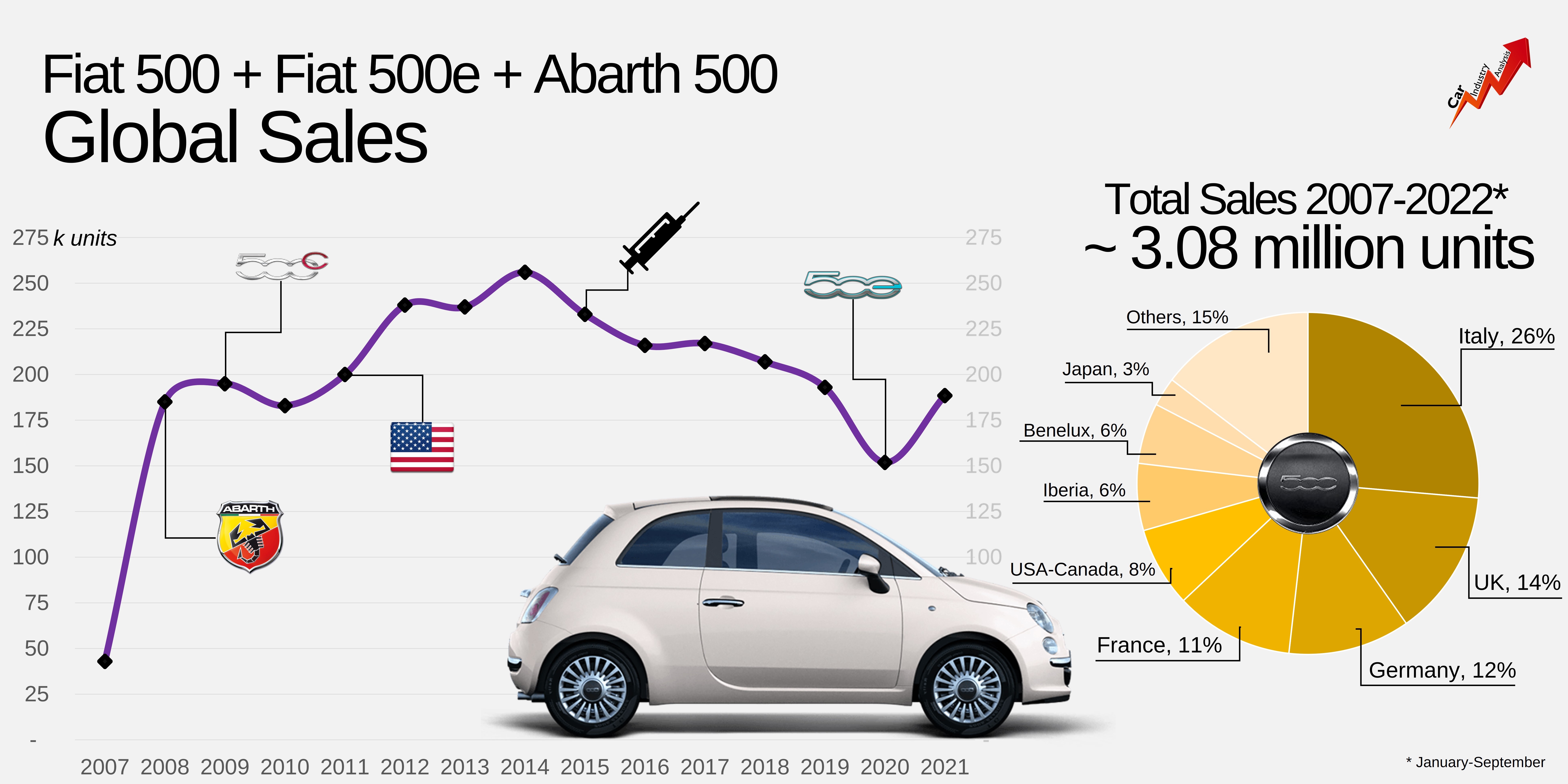The Fiat 500* is not only the most popular Fiat**, but its most iconic model. It saved the brand after the financial disaster with General Motors and allowed it to regain its dominance within Europe’s city-car segment. Since its introduction in 2007, the 500 has been at the core of the brand’s marketing efforts, becoming both a blessing and a curse for Fiat in Europe.
And it is actually a very successful car. Fiat has sold more than 3 million units during the 15 years it has been in the market. Although it is mainly a product for Europe, the 500 could be easily Fiat’s most global model. From the factories in Poland and Mexico, Fiat has exported this iconic model to markets like USA, Latin America, Australia, Japan, Korea, and even China.

Why is it a blessing?
In addition to its success in Europe – it barely sold abroad, the 500 allowed Fiat to properly make presence in the semi-premium segment. While the rest of the lineup is considered as “cheap” by the majority of the consumers in Europe, the 500 is positioned as a semi-premium iconic city-car that is clearly priced above its city-car rivals.

The average retail price of the units registered of the Fiat/Abarth 500 in H1 2022 was between 12% and 68% higher than its main rivals in Europe. The 500 was 28% more expensive than a Volkswagen up!, 33% more expensive than a Toyota Aygo X, and 72% more expensive than a Kia Picanto. Within Fiat family, the 500 is 68% more expensive than the Panda. And still, the Fiat 500 was the top-selling city-car.

This car demonstrates that Fiat can successfully sell expensive cars if they have personality and are properly positioned and built. The problem is that this formula can’t be replicated in other segments. Simply because the secret of the success of the 500 relies on its small size and its heritage.

Why is it a curse?
Because it has become a drug for the brand. As the car became more and more successful, the marketing efforts were all concentrated on it. The rest of the lineup was not considered cool or appealing, even by the brand’s management. The world of Fiat was then split in two: the iconic, stylish, and retro design represented by the 500, and the functional, mainstream, boring family represented by the Panda, 500L, 500X, and Tipo.

As a result, the presence of Fiat outside Italy was reduced to the success of the 500. For instance, it made up almost two in three of the passenger cars sold by Fiat in Europe through August 2022. It was the only product to post a sales growth during that period. It was actually, the most European product of Fiat, as only 22% of the 500’s sales took place in Italy, in contrast to the 84% for the Panda.

It is certainly a curse when you look at the product offensive. Fiat’s latest new product to hit the market was the electric Fiat 500 in 2020 (excluding the vans). Before that, the most recent launches were the Fiat 500X and Fiat Tipo, both introduced in 2015. Meanwhile the Fiat Panda, Italy’s most popular car and which was launched in 2011 has not received a new generation yet.

Fiat Europe decided to focus only on the 500, meaning that the brand lost its international appeal, and the Brazilian division moved away and found its own positioning. Will Fiat Europe be able to stop depending on the 500 to move forward?
*includes the Abarth 500
**includes Abarth
Some car images by IMAGIN.studio



















Even before the FCA+PSA merger, the Fiat brand was being silently phased out in favour of Jeep. The 500 badge on the new 500 EV foreshadowed the Fiat brand’s demise, as it is the first sign of “500” becoming a brand of its own, which allows the Fiat brand to be shut down for good.
(The fact that the 500 EV itself is not only awkwardly styled, but also an engineering disaster, with short range and without fast charging options, doesn’t bode well for a future 500 brand, but that’s a different story.)
Peugeot and Opel/Vauxhall will be the mainstream brands filling Fiat’s traditional position going forward, as Stellantis continues Elkann’s crusade against the brand his ancestors established.
LikeLike
Fiat 500 is a blessing to FIAT.
Every other brand would love to have it in their range.
The EV is a hit and it could sell much more if they had all components. A problem they had when they (re)launched the model in 2007.
Now, they must invest in other projects too, firstly in small cars.
Fiat 124 is another icon and could have been a hit in US with a proper engine. The 1.4 was obviously not a suitable engine. Maybe as a starter. The car had good reviews but all media prefered the 2.0L engine from MX-5.
Other past examples could be found but it is more important to invest in new successful trends.
LikeLike